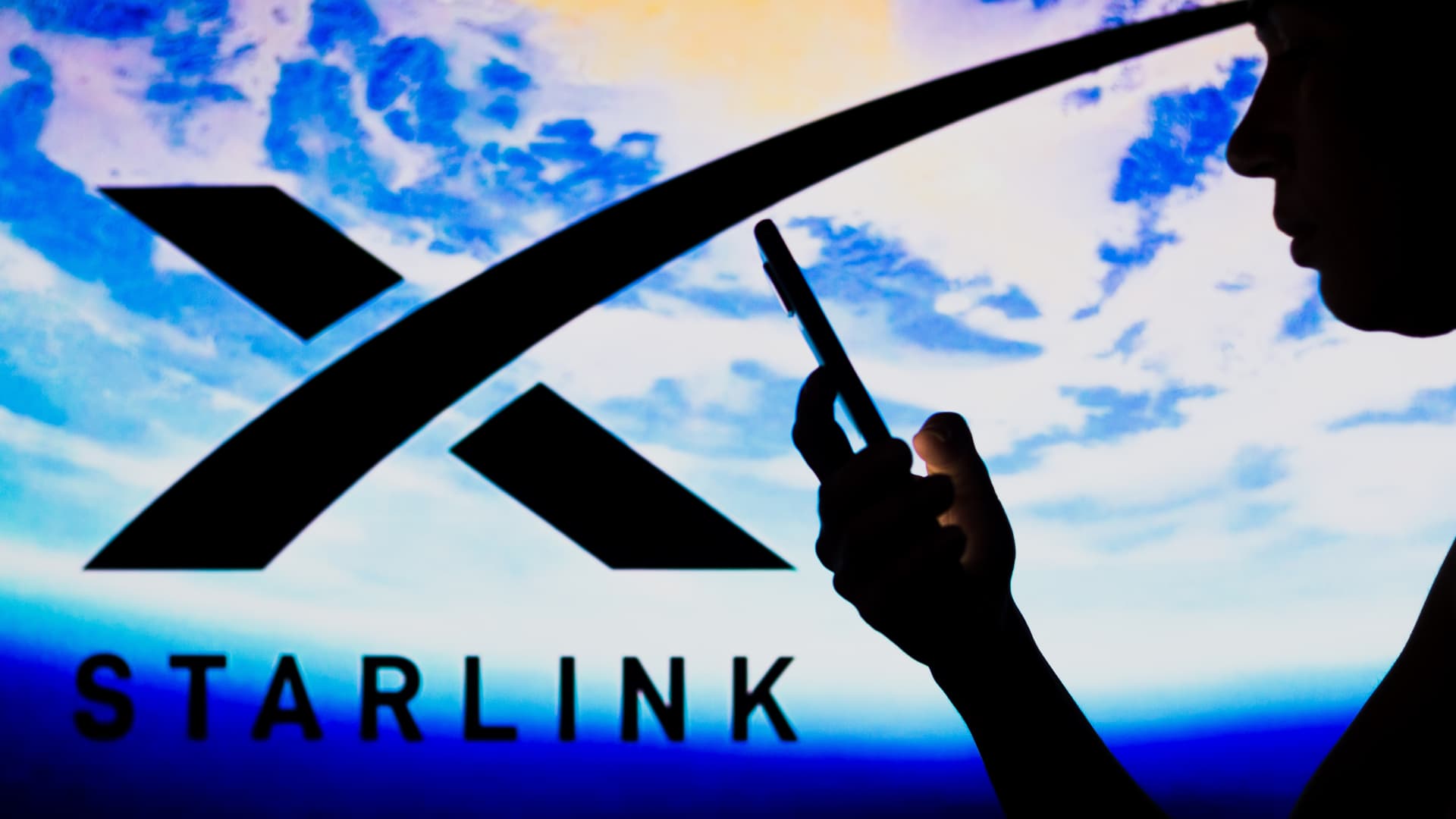Welcome to Tesla Motors Club
Discuss Tesla's Model S, Model 3, Model X, Model Y, Cybertruck, Roadster and More.
Register
Install the app
How to install the app on iOS
You can install our site as a web app on your iOS device by utilizing the Add to Home Screen feature in Safari. Please see this thread for more details on this.
Note: This feature may not be available in some browsers.
-
Want to remove ads? Register an account and login to see fewer ads, and become a Supporting Member to remove almost all ads.
You are using an out of date browser. It may not display this or other websites correctly.
You should upgrade or use an alternative browser.
You should upgrade or use an alternative browser.
Starlink direct to T-Mobile phone
- Thread starter Cosmacelf
- Start date
Interesting read, that entire thread. Bottom line, FCC approval may be a problem as evidenced by ASTS issues getting approval themselves.
If T-Mobile already has sole license for the spectrum, why would it be an issue?Interesting read, that entire thread. Bottom line, FCC approval may be a problem as evidenced by ASTS issues getting approval themselves.
As to other points in the thread. V2 sats will not start out with PCS, so no FCC delay to launch those. Could SpaceX launch with the antennas, and leave them powered down until aporoval (mass tradeoff)? Either way, it's not a roadblock to Starlink v2 roll out.
Timing sounded like it's due to rate of launches not an experimental period. One sat is enough to provide functionally.
Nothing sounded half formed beyond 3rd paty involvement (which had to wait on the reveal). They've run the link budget numbers and tested the signal path in the lab.
The drawback of higher frequencies is that higher frequencies don't penetrate objects well. So lower frequencies would require less power to transmit and presumably a smaller satellite antenna to receive the signal, all else being equal.Broadband Personal Communications Service (PCS)
FCC calls out PCS as 1850 MHz to 1990 MHz.
Sprint had CDMA in Band 25 at 1900 MHz, Band 41 @ 2.5 GHz was for 5G expansion.
Cheat sheet: which 4G LTE bands do AT&T, Verizon, T-Mobile and Sprint use in the USA? - IPS Inter Press Service Business
2.5 GHz would help with antenna size though.
But I'm not sure what the trade-off between antenna size, loss, etc would be here when comparing 1900 MHz to 2500 MHz, so it could be a wash.
Being familiar with another LEO satellite constellation which has been around for decades (Iridium), it's interesting to see the parallels between SpaceX and Iridium.
Way back in the 2000s Iridium was sold as a cellular replacement technology without having to set up cell phone towers everywhere. But somehow the fact that you need line-of-sight to the satellite to actually get a signal due to how far away the satellites are was overlooked and almost caused the death of Iridium. The book Eccentric Orbits is an excellent read that covers this for satellite buffs. Iridium uses L band (1610-1626.5 MHz).
So I was pleased to hear them mention (even in passing) line of sight and mention things like having the phone close to you will degrade the signal. These are things that are commonly overlooked. I would not expect the service to work well from inside a car (better in a Tesla with a glass roof) or inside buildings. Voice calls or anything needing a near 100% connection will be problematic until the constellation is fully built out as people using Starlink currently can attest to.
But for people outdoors and for SMS/email type of communications with asynchronous communications needs, this is huge, especially given that the cost appears to be nominal if T-Mobile is including the service with most plans.
Last edited:
It's great these companies are working together to solve the problem. And gawd knows publicly traded rocket companies (ASTS, GSAT) need a cash infusion. But being global, I bet none have easy regulatory approval.
Text message revenue will be miniscule but the potential customer base might be huge. Cellphone sales might even see a little uptick but cellphone manufacturers will need inexpensive phones with long battery life for those living without normal infrastructure.
Text message revenue will be miniscule but the potential customer base might be huge. Cellphone sales might even see a little uptick but cellphone manufacturers will need inexpensive phones with long battery life for those living without normal infrastructure.
dhanson865
Well-Known Member
A portable solar panel and a recycled LTE phone from a few years ago would work in the undeveloped countries.It's great these companies are working together to solve the problem. And gawd knows publicly traded rocket companies (ASTS, GSAT) need a cash infusion. But being global, I bet none have easy regulatory approval.
Text message revenue will be minuscule but the potential customer base might be huge. Cellphone sales might even see a little uptick but cellphone manufacturers will need inexpensive phones with long battery life for those living without normal infrastructure.
Mid band LTE isn't a recent development and portable solar panels can be found in random villages that have no hard line AC power source. Villagers all come around and charge up their phone once or twice a day.
I doubt recycled phones would be much of a selling point.A portable solar panel and a recycled LTE phone from a few years ago would work in the undeveloped countries.
Mid band LTE isn't a recent development and portable solar panels can be found in random villages that have no hard line AC power source. Villagers all come around and charge up their phone once or twice a day.
dhanson865
Well-Known Member
They are very common in 3rd world countries, no matter how much you doubt it.I doubt recycled phones would be much of a selling point.

Used phones drive Third World wireless boom
With the number of cell phones in use worldwide hitting 2.5 billion and rising, recycled phones are playing a growing role in the spread of wireless communications across the developing world, where land lines can be costly or unavailable.

The Rising Demand for Used and Refurbished Phones: A Market Overview
Uncover the growing trend of used and refurbished smartphone purchases globally. Learn how businesses can capitalize on this demand with NSYS Diagnostics software for optimized operations and increased profitability.
What does this mean for retailers and wholesale businesses? More and more end-users tend to choose used, renewed, or refurbished devices instead of purchasing new ones, about once in 2 years. Multiple statistical data prove this fact and the growing trend.
Last edited:
Weekend tangent: For those interested in Iridium, and the rather fascinating story of concept to product, and how it was almost killed at birth and the multiple last minute attempts to keep it alive, I recommend "Eccentric Orbits, The Iridium Story" by John Bloom... pretty fascinating if, like me, you find the inside story of tech companies/products compelling...The drawback of higher frequencies is that higher frequencies don't penetrate objects well. So lower frequencies would require less power to transmit and presumably a smaller satellite antenna to receive the signal, all else being equal.
But I'm not sure what the trade-off between antenna size, loss, etc would be here when comparing 1900 MHz to 2500 MHz, so it could be a wash.
Being familiar with another LEO satellite constellation which has been around for decades (Iridium), it's interesting to see the parallels between SpaceX and Iridium.
Way back in the 2000s Iridium was sold as a cellular replacement technology without having to set up cell phone towers everywhere. But somehow the fact that you need line-of-sight to the satellite to actually get a signal due to how far away the satellites are was overlooked and almost caused the death of Iridium. The book Eccentric Orbits is an excellent read that covers this for satellite buffs. Iridium uses L band (1610-1626.5 MHz).
So I was pleased to hear them mention (even in passing) line of sight and mention things like having the phone close to you will degrade the signal. These are things that are commonly overlooked. I would not expect the service to work well from inside a car (better in a Tesla with a glass roof) or inside buildings. Voice calls or anything needing a near 100% connection will be problematic until the constellation is fully built out as people using Starlink currently can attest to.
But for people outdoors and for SMS/email type of communications with asynchronous communications needs, this is huge, especially given that the cost appears to be nominal if T-Mobile is including the service with most plans.
I did mention that book in the middle of my long post, but perhaps I should have highlighted it more, it is an excellent book as you describe.Weekend tangent: For those interested in Iridium, and the rather fascinating story of concept to product, and how it was almost killed at birth and the multiple last minute attempts to keep it alive, I recommend "Eccentric Orbits, The Iridium Story" by John Bloom... pretty fascinating if, like me, you find the inside story of tech companies/products compelling...
Or I clearly didn't catch it... sorry for the duplicate....I did mention that book in the middle of my long post, but perhaps I should have highlighted it more, it is an excellent book as you describe.
But it was indeed a cool book.
dhanson865
Well-Known Member
mspohr
Well-Known Member

SpaceX says it will test Starlink's satellite-to-cell service with T-Mobile this year
SpaceX plans to begin testing its Starlink satellite-to-cell service with T-Mobile "this year," an executive of Elon Musk's company said on Monday.
Artful Dodger
"Neko no me"
And so it begins: (Sep 30, 2023)
Megaconstellations on X: "As @omnispace objections delay @Spacex's application for D2D service yesterday they requested Special Temporary Authorization w/ @FCC to test their D2D payload w/ @TMobile's PCS G Block coordinated w/ various radio astronomers across multiple US locations. Notify going to License https://t.co/1jWBeH9f86" / X
Hardware wise, as long as the received signal strength is high enough and the signal at the sattelite is high enough (both of which can be achieved by sattelite design), it doesn't care. (Ok, and the signal looks right, predistorted to cancel Doppler shift)I still find it incredible they are planning to test connectivity to "unmodified cell phones" ...
However, I expect the phone's radio software is modified to handle the longer round trip delay. (Though I can imagine inefficient fallback configurations where it need not be)
Given the distance delta and antenna design in the limited antenna space of a cell handset designed to hit a cell tower at most a few miles away, it's exactly signal strength that surprises me.
I'm not surprised that sat-to-handset is possible. I'm surprised it's feasible with existing designs.
I'm not surprised that sat-to-handset is possible. I'm surprised it's feasible with existing designs.
Which existing design though, phone or satellite?Given the distance delta and antenna design in the limited antenna space of a cell handset designed to hit a cell tower at most a few miles away, it's exactly signal strength that surprises me.
I'm not surprised that sat-to-handset is possible. I'm surprised it's feasible with existing designs.
Upgraded Deep Space Network still talks to Voyager 2.
Signal strength (per unit area) falls at the square of distance, 500km vs 50km requires 100x the area or 10x per side (if using the same receiver, which they are not). Starlink phone antenna is 5-6 meters, 25 m^2, equivalent to 0.25m^2 at 50 km or 2.7 ft^2. Cell tower antennas are about 1 sq ft.
Not to say it isn't cool and mind blowing!
Similar threads
- Article
- Replies
- 5
- Views
- 4K
- Replies
- 25
- Views
- 2K
- Replies
- 2
- Views
- 2K


